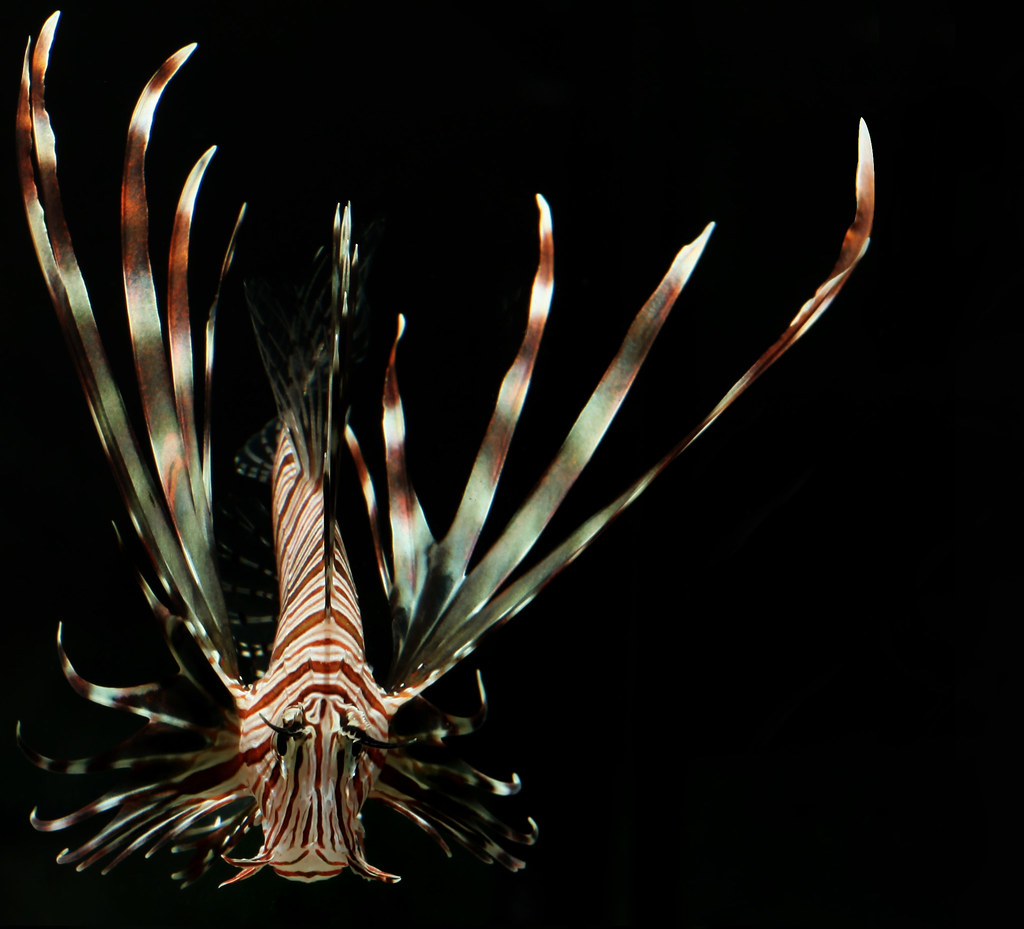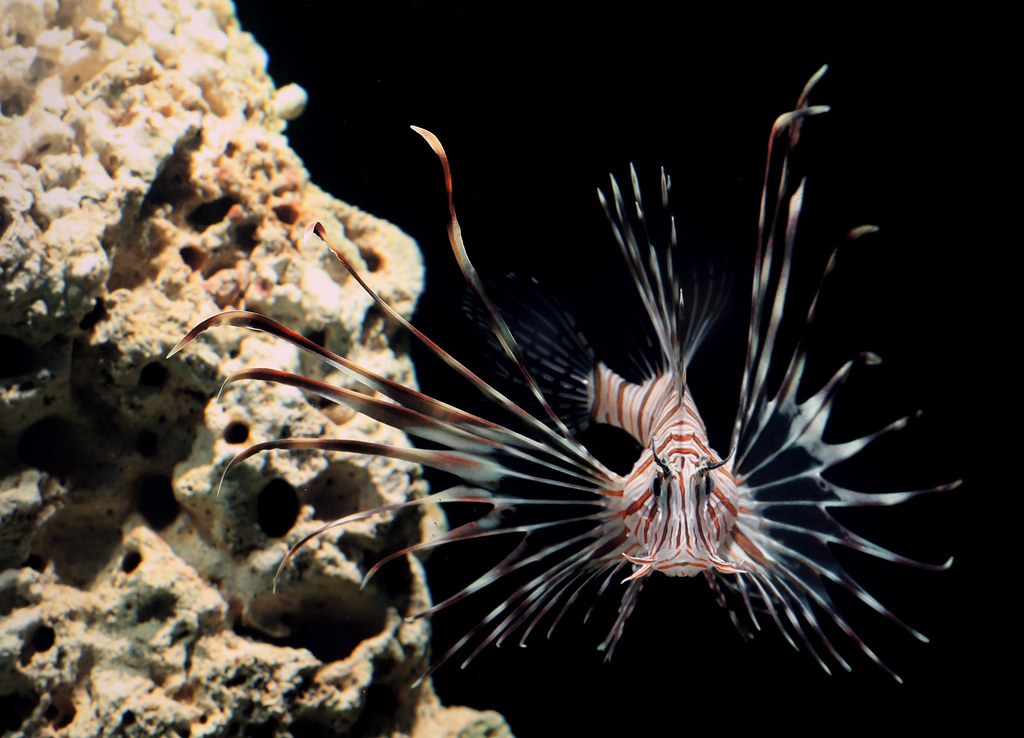Canon EOS 5D mkII
Canon 200mm f/2.8L
Off Camera Flash: Canon 430EXII x2
1/200, f/16, ISO 100
More info and shots after the jump!
The Volitan lionfish is not only gorgeous and deadly, but also invasive. Quickly taking over the Caribbean seas, and even venturing into the Florida everglades. Surprisingly enough, the large intimidating fins are not venomous at all! The spines on the top of it's head which it will spear you with on the other hand, are filled with Acetylcholine- a naturally occurring neurotransmitter that can actually be found in all of us! It is the high concentration in the lion fish that will give you a hard time.
Canon EOS 5D mkII
Canon 200mm f/2.8L
Off Camera Flash: Canon 430EXII x2
1/200, f/16, ISO 100
The shots in this series were shot using come new toys. The Canon 5D mkII, Canon 200mm f/2.8L, Canon ST-E2 Transmitter and a couple Canon 430EXII speedlites. The ST-E2 provides wireless ETTL transmission to the Canon 430EXII speedlites, controlling flash output through wireless triggering. This allows me to have an assistant (i.e. Tianna) hold the speedlites above the tank giving me more dramatic, controlled lighting while I move around to achieve the desired angles. The Canon 200mm f2.8L is ludicrously sharp and quick to focus. Lastly, the full frame 5D body has no "crop factor" or "magnification" allowing practical use of the 200mm lens. Had I shot with a 7D, for instance, the 200mm would act more like a 320mm on the 5D. Not to mention the ridiculous detail of the 21MP sensor.
Canon EOS 5D mkII
Canon 200mm f/2.8L
Off Camera Flash: Canon 430EXII x2
1/200, f/16, ISO 100
By utilizing the onboard ETTL communication between the speedlite and the camera body, the body determines how much light is required to properly expose the subject. This allows me, as the photographer to set an exposure that will underexpose all ambient light. This is how we can achieve an image where the subject is properly exposed, yet the background is black. No photoshop needed.
This last image is a little bit different. You will notice that the depth of field is much shorter than those above. Also, it appears to me a much tighter crop (without cropping!). This is because it was shot using extension tubes. This allows me to get much closer to the subject, using a lens like the Canon 200mm f/2.8L I was able to shoot as close as 6", where the listed minimum focusing distance is 1.5 meters! This method allows you to use some lenses as macro lenses as well. However, there are some drawbacks; you lose infinity focus (so there is a small window of focal lengths in which you can focus), depth of field is exaggerated- so at the same f-stop you will have less of your image in focus, lastly, you often lose some, if not all autofocus ability. But... you can get some killer shots.
Canon EOS 5D mkII
Canon 200mm f/2.8L (w/ Kenko Ext. Tubes)
1/100, f/8, ISO 800





No comments:
Post a Comment